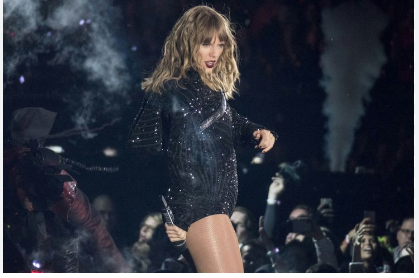
The story of Marianne Bachmeier is one of the most shocking cases of vigilante justice in modern European history. A grieving mother who took the law into her own hands, Bachmeier became both a folk hero and a criminal in the eyes of the public. Her cold-blooded execution of her daughter’s killer inside a courtroom in 1981 sparked worldwide debate about justice, revenge, and the failures of the legal system.
Born into a troubled working-class family in post-war Germany, Bachmeier’s life was marked by instability, abandonment, and tragedy. By the time she was 22, she had already given up two children for adoption before raising her third child, Anna, as a single mother. When Anna was brutally raped and murdered at just seven years old, Bachmeier’s world collapsed. The killer, Klaus Grabowski, was a known pedophile who had previously abused children yet remained free due to legal loopholes.
On March 6, 1981, during Grabowski’s trial, Bachmeier smuggled a Beretta 70 pistol into the courtroom and shot him seven times at point-blank range. The act was captured by journalists, and images of Grabowski’s lifeless body spread across newspapers worldwide. While some praised her bravery, others condemned her for undermining the justice system.
This article explores Bachmeier’s life, her daughter’s horrific murder, the courtroom shooting, and its aftermath. We’ll also examine how the media shaped her story, the films and documentaries inspired by her case, and the moral questions her actions raised.
Read another article about: Trish Hawkins
Who Is Marianne Bachmeier?
Marianne Bachmeier was born on June 3, 1950, in Sarstedt, West Germany, into a family scarred by war, alcoholism, and abuse. Her father, a former Waffen-SS soldier, was a violent drunk, and her mother struggled to maintain stability.
Early Life & Struggles
- At 16, she gave birth to her first child but gave it up for adoption due to financial struggles.
- At 18, she became pregnant again but was raped shortly before giving birth, forcing her to place the second child for adoption as well.
- In 1972, at age 22, she had her third child, Anna, whom she raised alone while working nights at a pub.
Life as a Single Mother
Bachmeier’s bohemian lifestyle was heavily scrutinized after Anna’s death. She often brought Anna to work, where the child slept on bar stools while her mother served drinks late into the night. Friends described Bachmeier as neglectful but loving, a woman who lacked parenting skills but deeply cared for her daughter.
The Turning Point: Anna’s Murder
The brutal killing of Anna in May 1980 shattered Bachmeier’s life. The crime exposed failures in Germany’s justice system, as Grabowski—a convicted child molester—had been free despite his history. This injustice fueled Bachmeier’s rage, leading to her infamous courtroom revenge.
Marianne Bachmeier’s Courtroom Shooting
The Lübeck courtroom shooting remains one of the boldest acts of vigilante justice in legal history.
The Day of Revenge (March 6, 1981)
- Bachmeier smuggled a pistol into the trial’s third day.
- She fired seven shots at Grabowski, six hitting him in the back.
- Grabowski died instantly, collapsing in front of stunned judges and reporters.
Immediate Aftermath
- Bachmeier dropped the gun and surrendered without resistance.
- Police found a letter in her purse explaining her motives: “I did it for Anna.”
- The shooting was front-page news worldwide, with many calling her a “mother avenger.”
Legal Consequences
- Initially charged with murder, she was later convicted of manslaughter.
- She served only 3 years of a 6-year sentence before being released on probation.
- Public opinion was sharply divided—some saw her as a hero, others as a criminal.

Marianne Bachmeier’s Cause of Death
After her prison release, Bachmeier’s life took a tumultuous turn:
- Moved to Nigeria with her new husband (a teacher) but later divorced.
- Worked in a hospice in Sicily before being diagnosed with pancreatic cancer.
- Returned to Germany and died on September 17, 1996, at age 46.
- She was buried beside Anna in Lübeck’s Burgtor Cemetery, finally reunited in death.
Anna Bachmeier: The Daughter Who Inspired a Revenge Killing
Anna’s short, tragic life became the center of a national scandal.
The Abduction & Murder (May 5, 1980)
- Anna skipped school after an argument with her mother.
- Grabowski lured her with kittens, then raped and strangled her.
- He dumped her body in a canal, where it was later discovered.
Grabowski’s Criminal Past
- A repeat sex offender, he had voluntarily undergone castration but later took hormones to reverse it.
- His light sentences outraged the public, exposing flaws in Germany’s justice system.
Marianne Bachmeier in Movies & Media
Her story has been dramatized multiple times:
Films & Documentaries
- No Time for Tears (1984) – A semi-documentary featuring reconstructed courtroom footage.
- Anna’s Mother (1984) – A biographical drama starring Gudrun Landgrebe.
- ZDF’s When Women Kill (2017) – A psychological analysis of her case.
Public Fascination
- Her case remains a hot topic in true crime circles.
- Debates continue: Was she justified, or did she commit murder?
The Courtroom Drama & Legal Fallout
The Lübeck District Court became the stage for one of Germany’s most explosive legal dramas. Bachmeier’s shooting of Grabowski wasn’t just about revenge—it exposed deep flaws in the justice system.
The Trial Proceedings
- The original trial against Grabowski had only just begun when Bachmeier acted.
- Day 3 of testimony (March 6, 1981) was interrupted by seven gunshots.
- Judges initially thought it was a firecracker prank before realizing Grabowski was dead.
Public Outcry & Legal Reforms
- The case forced Germany to re-examine sentencing for repeat sex offenders.
- New debates emerged about chemical castration vs. prison time.
- Bachmeier’s light sentence (6 years, served only 3) showed judicial sympathy.
Key Quote from the Judge:
“This was not murder, but a broken woman’s act of despair.”
Why Did Marianne Bachmeier Become So Famous?
Bachmeier’s story transcended true crime to become a cultural phenomenon. Here’s why:
Media Frenzy (1981-1983)
- Stern magazine paid 100,000 DM for her exclusive story.
- Tabloids dubbed her “The Mother Avenger” (German: Die Rächermutter).
- TV crews crowded Lübeck for months, filming her every move.
Public Sympathy vs. Backlash
Supporters (60% in polls):
- Saw her as a heroine fighting a broken system.
- Sent 15,000 letters to her prison.
- Funded her legal defense through donations.
Critics (40%):
- Argued she made a mockery of the law.
- Pointed out her neglectful parenting of Anna.
- Accused her of profiting from tragedy (book deals, interviews).

Lasting Cultural Impact
- Inspired feminist debates about mothers & violence.
- Became a symbol of vigilante justice worldwide.
- Still referenced in German law schools as a cautionary tale.
Nationality, Religion & Personal Beliefs of Marianne Bachmeier
Bachmeier’s background shaped her worldview and actions:
German Identity
- Born in West Germany (1950) to East Prussian refugees.
- Her father’s Nazi past (Waffen-SS) haunted the family.
- Later in life, she rejected nationalism, calling Germany “a country that failed my daughter.”
Religious Views
- Raised Catholic but abandoned faith after Anna’s death.
- In prison, she reportedly told a priest:
“If God existed, He would’ve stopped Grabowski, not me.” - Buried in a secular ceremony (no cross on her grave).
Political Leanings
- Never affiliated with any party.
- Criticized all politicians for “empty promises about justice.”
- In a 1995 interview, said:
“Laws protect monsters. Mothers protect children. That’s the only truth.”
5 Shocking Facts About Marianne Bachmeier
- She Practiced the Shooting
- Rehearsed with the Beretta in a pub basement for weeks.
- A friend later admitted: “She asked me to time her draws. I thought it was a joke.”
- Sold Her Life Story to Fund Legal Battles
- Stern magazine’s 100,000 DM deal caused outrage.
- Used the money to pay lawyers, not for personal gain.
- Never Expressed Remorse
- In her 1994 autobiography, wrote:
“I’d do it again. Every bullet was for Anna.” - Refused a prison chaplain’s offer of absolution.
- Two Secret Children Before Anna
- Gave up two babies (1966 and 1968) for adoption.
- They never contacted her, even after her fame.
- Her Grave is a Pilgrimage Site
- Visitors leave toys and candles for Anna.
- Neo-Nazis briefly tried to claim her as a martyr (family denounced this).

FAQs
Q1: Was the shooting premeditated?
A: Yes. She:
- Bought the gun 3 months prior.
- Wrote a farewell letter to family.
- Chose her outfit to hide the pistol (oversized coat).
Q2: Did Grabowski deserve it?
A: Controversial. He:
- Was a convicted child rapist.
- Received hormone therapy post-castration.
- Admitted to killing Anna but blamed her for “blackmailing him.”
Q3: Why only 3 years in prison?
A: Judges considered:
- Her mental state (PTSD from Anna’s death).
- Public pressure (55% supported early release).
- Grabowski’s criminal history.
Q4: Are there conspiracy theories?
A: A few claim:
- The gun was planted (debunked by ballistics).
- Grabowski had powerful connections (no evidence).
Conclusion: Vigilante or Victim?
Legacy Today
- German courts now mandate lifetime supervision for high-risk pedophiles.
- Her case is studied in ethics classes worldwide.
- Anna’s grave remains a symbol of stolen childhood.



